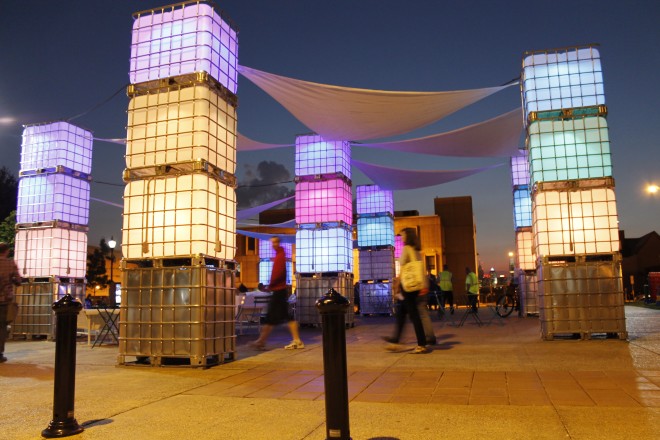A biweekly newsletter with public space news, resources, and opportunities.
A curated dispatch on all things public markets plus the latest announcements from the Market Cities Program.

Great public spaces are the places that we remember fondly; they play a central role in the stories we tell about ourselves and our lives. But even while places like parks, squares, markets, or streets are well-used and well-loved, they often don’t get the public recognition they deserve. This is why the Environmental Design Research Association (EDRA) is committed to recognizing professional and scholarly excellence in environmental design – design that contributes to the creation of human-centered places.
EDRA is a global interdisciplinary community of research, design, and planning educators, professionals, and students, that explores the links between people and their built and natural environments. Founded in 1969, EDRA’s vibrant network of visionaries continue to anticipate movements in research and design decades before they hit the mainstream.
In partnership with Project for Public Spaces, EDRA will hold its 18th annual Great Places Awards on May 18-21, 2016 in Raleigh, NC. There are four award categories this year:
The Great Places Awards differ from most other design award programs, given their explicit focus on Placemaking. Rather than basing the reward solely on good design, EDRA recognizes the critical importance of creating human-centered places that provide meaningful environments for the communities that use them.
Past winners have been projects that made a strong impact in their communities, such as 2015’s Place Design Award Winner, Roosevelt Plaza Park. Roosevelt Plaza Park is a central open space in Camden, NJ, where in late 2014 a Pop-Up Park enlivened the existing park and encouraged residents, employees, students, and visitors to spend time outside. The main feature of the pop-up was the Intermediate Bulk Containers which were transformed into a public space that consisted of a piano house, a night-time light show, and a range of affordable amenities such as $15 orange plastic chairs from Home Depot, and off-the-shelf patio umbrellas. The placemaking Pop-Up came back for a second year in August 2015 as Roosevelt Plaza Park H2O, where the goal was to encourage city residents and visitors to utilize and actively enjoy safe public recreational spaces in the city, and consider implementing green infrastructure and innovative stormwater management solutions at home. We hope to see another Pop-Up in Roosevelt Plaza Park in 2016.

In 2014 Seattle’s Pike-Pine Renaissance Project won the Place Planning Award where the street was thought of as the city’s greatest public space. This plan presented a layered approach to its design (light, middle, and deep) so that features such as temporary installations, pavements and fixed furnishings, and allocations of right-of-way, would create better streets for people. This resonates strongly with PPS’s prominent Streets as Places campaign, which is about helping people begin to see streets in their entirety: not just their function in transporting people and goods, but the vital role they play in animating the social and economic life of communities. The plan has moved forward but is still in its early stages, and recently installed banners along the Pike-Pine Corridor.

This year’s Great Places Awards competition seeks entries from a range of design and research disciplines — particularly those projects whose significance extends beyond any one profession or field. All submissions should show how research and/or public participation is linked to or part of an environmental design practice, and vice versa. Submissions should also demonstrate how an understanding of the experience of place may be used to generate insightful design.
Recipients of the Great Places Awards are selected by an interdisciplinary jury with diverse backgrounds in urban design, research, and practice. The jury evaluates how each project, no matter what the discipline, addresses the human experience of well-designed places.
The winning entries will be on display throughout the conference and publicized throughout the year in various print and electronic publications.
All submissions for the 2016 Great Places Awards must be electronically uploaded to the submission site at http://www.edra.org/greatplaces by 11:59pm ET on Monday, February 15, 2016.
The rich text element allows you to create and format headings, paragraphs, blockquotes, images, and video all in one place instead of having to add and format them individually. Just double-click and easily create content.
The rich text element allows you to create and format headings, paragraphs, blockquotes, images, and video all in one place instead of having to add and format them individually. Just double-click and easily create content.
Body Text Body Link
The rich text element allows you to create and format headings, paragraphs, blockquotes, images, and video all in one place instead of having to add and format them individually. Just double-click and easily create content.
Here is some highlighted text from the article.




Headings, paragraphs, blockquotes, figures, images, and figure captions can all be styled after a class is added to the rich text element using the "When inside of" nested selector system.
Headings, paragraphs, blockquotes, figures, images, and figure captions can all be styled after a class is added to the rich text element using the "When inside of" nested selector system.
Headings, paragraphs, blockquotes, figures, images, and figure captions can all be styled after a class is added to the rich text element using the "When inside of" nested selector system.